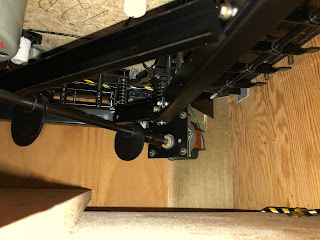Correcting a design flaw in 1962 Bally Spinner using junk parts.
I am currently the caretaker of a 1962 Bally Spinner (No! Not 1963. Spinner was released December 28th 1962 according to IPDB). Spinner is a unique concept in the history of gambling machines. It’s like a giant game of Hungry Hungry Hippos for adults.
I’ve known of... and worked on this rare game since before it ended up in the middle of my living room.
And for as long as I’ve known this game it’s had the same problem. Way before it even ended up at my place the game didn’t reset and start properly.
Back then, I thought it wasn’t resetting properly due to the fact that all the switch points were heavily tarnished so I cleaned all the switches and the game seemed to work fine. But the problem wasn’t entirely solved... Intermittent problem.
A dime would be dropped in the coin chute and more often than not, the centre disc would start spinning without first ejecting the trapped balls from the previous play.
Normally, at coin drop.
The start relay would engage by way of the coin switch.
Then, simultaneously, the timer unit reset coil and the ball dump motor would energize through the start relay and the start relay would hold in (remain energized) through the open at zero switch (closed the rest of the time) on the timer unit and the ball dump motor cam switch open at index(closed when in rotation).
Once the ball dump and timer unit reset would complete, both switches holding the start relay would break, the start relay would drop out and the felt disc would start spinning and normal play would begin.
In reality, what was happening was that the timer unit would reset so fast that it didn’t allow enough time for the ball dump cam to rotate enough to close the cam switch, due to mechanical loss and slop in the mechanism. Before the reset cam could even rotate enough for the cam switch to close, the timer unit would have reset, and electrically both conditions for the start relay to drop out were met.
The timer unit would reset lightning fast because it didn’t have a wiper or a disc. Just a ratchet gear, with no wiper and disc drag to slow down the ratchet gear as it wound down to zero position.
At first I wanted to correct this problem electro-mechanical by installing a 0-5 second delay relay and use it to delay the timer unit reset coil from energizing by about 1 second so I ordered a Chinese copy of a Omron delay relay from Amazon, but then I got impatient. Update post with solid state timer HERE.
I should just try to create a delay mechanically by adding a disc and wiper to the timer stepper unit. The wiper and disc would have for only use to create drag to slow down the ratchet gear just enough so that the ball dump cam would rotate enough to close it’s switch.
So I looked through my box of bad parts and found a bad payout disc from a Bally Super Wall Street and some 3 finger wiper of unknown origin. The 70’s parts fit perfectly on a 60’s stepper because Bally and a slight tension adjustment of the ratchet gear spring did the trick.
So far so good!












very cool solution
ReplyDeleteif the start relay is held on via an OR condition, why doesn't the dump switch keep it held? Or does the dump motor not get to the point where the switch closes (rotation state)?
ReplyDeleteFor the Start relay to remain held in there needs to be a moment when both switches are closed. But the dump motor cam switch did not get to the point where the switch was closed before the timer zero switch opened so the hold in circuit would break.
Delete